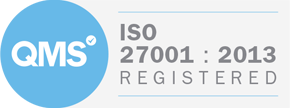
For many businesses, making the decision between Microsoft and Google can be a difficult one when choosing which suite of apps and email system to use.
They both offer some useful products and features. On paper they may seem like quite similar offerings but which is most practical in terms of the actual day to day running of a business and which suite of products will be most suitable for the needs of your company?
Business Emails—Gmail vs Outlook
One of the key decisions for your business will be which email service to use. Google Gmail and Microsoft Outlook are among the top email applications but which will work best for your business?
The decision may be partly made by which existing apps you use already as part of your working day.
For example, if you and your team are familiar with and regularly using Google Docs, Slides and other apps in the Google suite then Gmail could be a better fit. If you are already using Microsoft Onedrive and Word, Excel, etc. then Outlook may integrate better with your setup.
Outlook provides a range of additional advanced features for businesses. This includes time saving automation features, email handling and routing rules, reusable templates, more storage space up to 1 TB and up to 10,000 emails per day, as opposed to Gmail's 2,000 limit.
On paper, this may seem like Microsoft Outlook is the better offering for extensive business use.
Gmail includes a range of features not included with Microsoft Outlook, such as automated translation, AI suggestions for the composition of emails, and an extensive range of integrated third-party applications.
However, the main thing that sets Gmail apart from Outlook is the user interface and overall ease of use, which should not be overlooked when rolling the application out to an entire business.
The neat interface, uncluttered layout and seamless integration with other applications means that the working day for your team will go much smoother as a result.
Microsoft Outlook, in comparison, feels slightly outdated and clunky, it can be somewhat awkward to operate and you may find that staff members in general have difficulty in navigating the lists of menus and finding what they need for work purposes.
With the better user interface, a range of additional features, and a free pricing plan for all components needed, this makes Google Gmail the clear choice for businesses looking to find the most effective email provider to roll out across the board.
Office Productivity Suite—Google Workspace vs Microsoft 365
Traditionally, Microsoft Office products have been the industry standard for office applications such as word processing and spreadsheets. Throughout the '90s and early 2000s nothing came close to applications such as Microsoft Word for the functionality and ease of use; but how does Microsoft Office compare in today's marketplace with the more recent introduction of applications, such as those in Google Workspace?
For every application within the Office 365 suite, there is an equivalent product in Google Workspace. The only elements missing from the Google selection are graphic design applications such as MS Publisher and there is no equivalent database management app such as Microsoft Access.
So for those businesses heavily involved in graphic design or managing complex data projects, the Microsoft Office 365 suite may be more suitable.
In terms of spreadsheets, presentations, calendar bookings, and word processing, you would need to compare the two office productivity suites side by side to see which is the best fit for your business. So let's drill further into the differences between the two providers to see which is the overall best choice.
Word Processing—Microsoft Word vs Google Docs
When switching over to any new software there is always an inherent resistance to the new application. People usually don’t like change and are familiar with their own ways of doing things with tools they may have been using for years.
Often, they will not want to switch over due to a lack of familiarity and whatever it is, at first they won't like it, even if the product is better overall in terms of its functionality.
Thankfully, with Google Docs, the controls and layout are more or less identical to those in Microsoft Word, which should make switching over from one application to the other a much easier process for your staff members.
Whilst people are generally more familiar with Microsoft Word, and it does feature more advanced formatting and layout options, there are a number of characteristics of Google Docs that make it the better option for most business settings.
Google Docs features automatic online synching, the ability to add comments from editors and a range of additional plugins.
Furthermore, as Google Docs is a cloud-based web application, you get one universal document that can be accessed and edited live by the appropriate members of the team, with the changes seen across all user devices. This is more practical for most business purposes.
With Microsoft Word, on the other hand, it is still a physical file that needs to be sent to the appropriate parties, with multiple versions of the file being created when edits are made. This can complicate the process and make it difficult to ensure that the right people have the correct version of the file.
In general, with Word and other Microsoft products, you get the overall feeling that the application is somehow working against you, rather than helping you to perform your current task.
For example, images won't quite sit where you want them to, or where you left them in relation to the text in the document.
With MS Word, you will often find quirks within the interface that will mean formatting changes will revert back to their original state, or embedded objects will suddenly be found in the middle of a block of text.
Presentations—Google Slides vs MS PowerPoint
Again, with MS PowerPoint, there are several advanced layout and design features, although Slides feels easier and more intuitive to operate.
The features may be more basic but they all work as they should, making it easy to move things around and set up the presentation as required.
Google Slides is quite good at intelligently snapping objects and images to various grids and seems to recognise which corner of the image should align with the block of text, for example.
Using the present button, you can integrate a Google Slides presentation into a meeting on Google Meet and the overall intuitive interface means you can use Slides for a number of tasks that require a professional look that are not strictly presentations as such.
For example, the layout functions in Google slides mean that it is good for producing portfolios of work, resumes, reports, or other documents that require text and design elements.
Spreadsheets—Google Sheets vs Ms Excel
It is a similar situation with the spreadsheet applications from the two main providers. MS Excel provides better statistical analysis tools, visualisations, and macros, which may be more suitable for businesses that need these advanced functions.
Google Sheets has a better format for sharing spreadsheets with other members of the team, with documents available in offline or online mode, and live chat functions integrated into the application.
Conclusion
Overall, the Google suite of products tends to win over the Microsoft counterpart, with a more modern feel, intuitive interface, and range of additional features and options.
However, it will depend on the nature of the business. Those businesses involved in graphic design or data led projects may need applications such as Publisher or Access, which are not really represented in the Google suite of products. Similarly, for those working at a more advanced level and requiring in depth analysis tools and extensive layout options, or high capacity in terms of emails and communications, Microsoft products may have the features they require, for the right price.
In general, it seems that Google Workspace is a good basic starter level package for most businesses performing typical office based tasks. It doesn't cost anything and your staff won't find it too complicated to operate. Also as they are mostly web based applications, you don't even need to go round manually installing them on every device.
For those businesses that require the higher level functions, it may be worth investing in the upgraded Microsoft packages that grant access to this additional functionality, and just deal with any weird stuff when it happens.
Contact Lyon Tech
Whether you opt to use Microsoft Office 365 or Google Workspace as your primary office productivity suite, at Lyon Tech, we provide a range of solutions to make business processes more streamlined and efficient.
From cloud based file storage and fully remote working, to virtual workstations, data communications, infrastructure analysis, and cybersecurity solutions, we offer a wide range of cutting edge systems to enhance workflows and improve the daily operation of your business.
For more information on which technology and solutions would be most beneficial for your business, contact our advisors directly and we will be more than happy to take you through the range of options.




